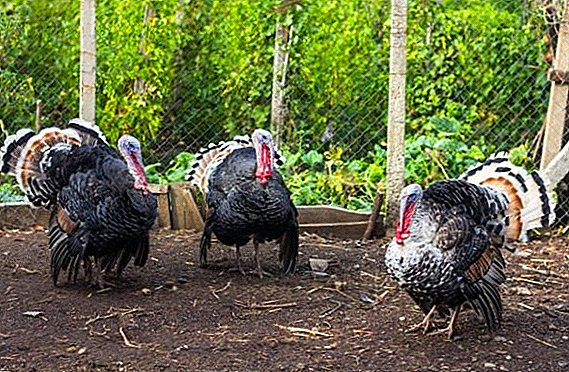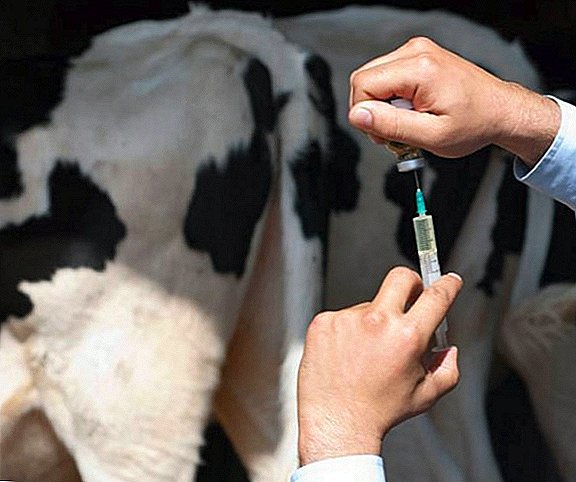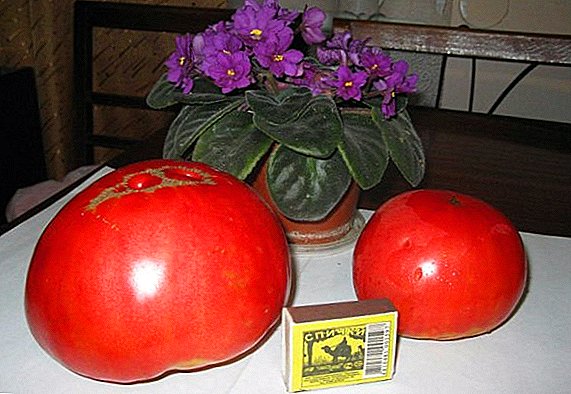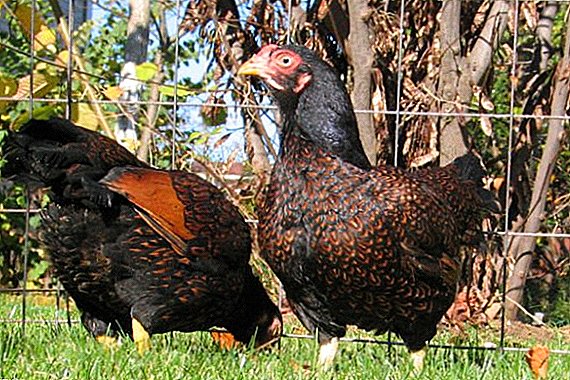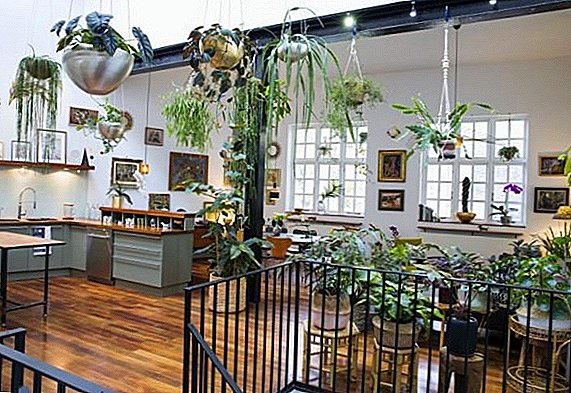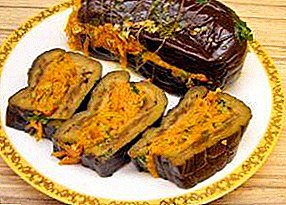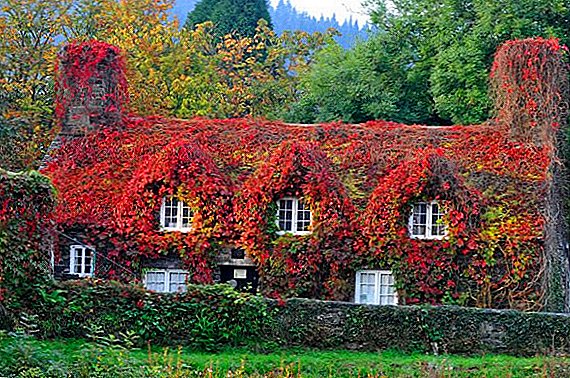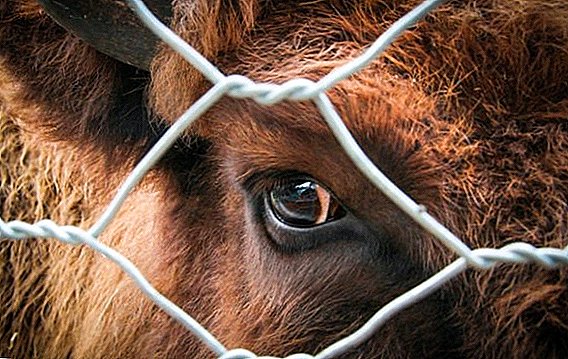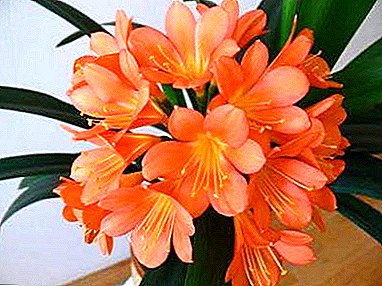
Clivia is an evergreen herbaceous perennial plant of the Amaryllis family. The birthplace of the flower is the subtropics of South Africa. The flower feels great in the indoor environment, not whimsical to care and rarely affected by pests and diseases.
Flower growers appreciate the plant for its lush flowering and bright buds that not only transform everything around, but also give a charming fragrance. There are practically no difficulties with growing: only a lack of basic knowledge of the biological characteristics of a plant and the violation of elementary conditions of maintenance can provoke disease and death of a flower.
Botanical description
The name of the Clivia family was given by the botanist John Lindley, who named it in honor of the Duchess Charlotte Clive (Queen Victoria's governess). She was famous for her passion for floriculture.
Under the ground, clivia develops a white and thick, fleshy rhizome, to which thickened leaf bases are attached. The clivia flowers are shaped like bluebells and are assembled into an umbrella 20 to 60 pieces on the peduncle. Flowering begins in February - March and lasts for a month. When in nature is still just preparing for the process of awakening, clivia blooms and pleases the owners.
About the most beautiful clivia types: Cinnabar, Nobilis, Gardena, read in our material.
Diseases with photos and methods of treatment
Why does not bloom at home?

Transplant in a pot too large
At the same time, Clivia begins to increase the vegetative mass, filling the space in the soil with the root system. Leaf shoots are also actively developing.
Attention! Clivia blooms only when the entire pot is fully occupied by the roots.
Solution: when transplanting plants, choose a pot 3 cm wider than the previous one.
Each grower must remember that plants older than 10 years can not be transplanted (when is it necessary to transplant the cleavia and how often?).
Nutrient Shortage
Clivia responds very well to fertilizing. A lack of nutrients adversely affects flowering.
Solution: You need to start feeding the flower in the summer in the first year of life. Feed the flower should be once every two weeks, and alternate between organic and mineral dressings.
Organic fertilizers are important to choose based on biohumus.as they give the maximum effect.
It can be Ideal, Giant, Breadwinner. For watering take 1 tablespoon of fertilizer and diluted in 2 liters of water.
Mineral complexes such as Ammophos, Kemira, Nitrophoska are diluted in warm water in the ratio of 2 g of fertilizer per 1 liter. Since September, the flower is no longer fertilized. The following dressing can be carried out after releasing the arrow of the peduncle with a cleaved flower.
Excess nitrogenous fertilizer
When choosing fertilizers, you should carefully read the composition. Nitrogen-based fertilizers can delay the initiation and emergence of the peduncle.
Solution: If you want abundant flowering, then you need to give preference to complexes with a high content of potassium.
Uncomfortable air temperature
Air temperature is too high or too low.
Solution: The optimal temperature for clivia is +20 degrees. Winters at +18 degrees.
Causes of Leaf Drying

Excess moisture, water stagnation
Solution: Follow the watering mode. With excessive moisture you need to check the roots of the flower. Sick roots are removed. Treat sections with crushed charcoal for disinfection. The plant is transplanted into a pot with new soil and smaller in size than the previous one. Retain moderate watering.
Why does the plant turn yellow?

Natural aging
The solution: the biological aging of some leaves and the birth of other leaves is a natural process of nature. In such cases, do not do anything.
Direct sunlight
If the flower is on the windowsill in direct sunlight, then burns will remain on the foliage.
Decision: need to provide diffused light to the flower.
Seed ripening
During pollination and ripening of the seeds of a plant, redistribution of nutrients from the leaves to the fruit of the flower takes place (for information on how to propagate the bloom with seeds, shoots and part of the rhizome, read our material). The leaves turn yellow.
Solution: remove flower stalk after flowering stops.
Lack of fertilizer
Actions: fertilize 1 time in 2 weeks.
What to do if the peduncle does not grow?
The reasons:
- cold content during budding;
- content without a rest period;
- poor watering at the beginning of active growth;
- winter is too warm.
Decision:
- After the spike arrow appears, the pot is transferred to the east window and optimizes the air temperature from 20 ° C to 25 ° C.
- Watering the plant with warm water, the temperature of which does not exceed 40 ° C.
- Provide rest in the autumn-winter period (at least 2 months) before the appearance of the peduncle.
Important! The older clivia, the more time you need to rest.
- During the formation of buds irrigation volume increase.
- The temperature in the rest period is from 12 ° C to 15 ° C.
How to create favorable conditions?
 To avoid disease and achieve regular flowering of clivia, the following conditions should be observed:
To avoid disease and achieve regular flowering of clivia, the following conditions should be observed:
- Rest period.
Young plants rest for two months from October to November. Adults and large specimens require a longer rest. In September, reduce watering to 1 time per month. Place in a cool place with a temperature of 14 degrees. After the flower arrow appears and grows up to 10-15 cm, the plant is placed in a warm place. Watering becomes regular. Fertilizers are applied on demand.
- You can not bother the plant.
During the period of tying the buds and the flowering itself it is not possible to move the flower from place to place. If the need arose, then you need to maintain the direction of growth of the flower, otherwise the plant can lose leaves. Clivia blooms from February. The flowering period of 3-4 weeks.
Clivia pests
Shchitovka or shield aphid
Insect of the family of worms, covered with a wax shield. The larvae of the scytology are mobile. Adults individuals stick to the plant and remain motionless. This makes it easy to detect. Externally, they resemble droplets of wax or growths.
Attention! Flaps sucks the plant's juice and secrete a sticky liquid that clogs the pores, so it is difficult for the plant to breathe. Leaves die.
Actions:
- Dryness of air and a lack of light are a provoking factor, therefore it is necessary to provide additional light and spraying.
- Remove dead plant parts.
- With live shoots with a soft brush and a solution of laundry soap to wash away the remaining pests.
To get rid of the shields, which are hidden in the leaf axils, it is necessary to treat the plant with insecticides. For example: Aktara, Aktellik, Fitoverm, Arrivo.

Spider mite
It is activated in winter and spring. In the conditions of dry and warm air, he feels at ease and develops. A sucking insect pierces the walls of the lamina and takes the nutrients the plant needs. A small yellow spot remains at the puncture site. Leaves lose turgor, grow dull. Tick leaves a web that can be seen on the lumen.
Actions: to increase the humidity spray the plant, to get rid of the insect is treated with a solution of soap.
With a strong spread of spider mites, they are treated with acaricides - drugs against ticks. For example: Akarin, Agrovertin, Inta-vir, Vertimek.

Mealybug
Important! Mealybug - sucking insect. Young shoots of a plant are a favorite place.
Mealybug colonies on the leaves look like spraying flour or small pieces of cotton wool. The reason for the appearance of mealybugs on the plant can be improper care. (How to organize care for cleavage at home?).
Actions: when you first find a mealybug, you can simply remove it with a wet swab. But if it has already multiplied and formed colonies, then it is necessary to spray the clivia with insecticide weekly until it is cured. With a strong infection is better to change the soil in the pot.

Aphid
It looks like a small mole. You can observe it in the summer on the lower part of the leaflets. It affects young shoots that it is easier to pierce. It feeds on the plant sap. Excess juice exudes, forming a "honeydew." As a result of the life activity of aphids, the leaves of the plant twist and deform.
Act:
- Trim most affected leaves of clivia.
- Treat the flower with an insecticidal preparation.
- The plant is set aside from other flowers in quarantine to avoid contamination of other flowers.

Observance of simple rules of care for Klivia ensures its timely and abundant flowering. Regular inspection of the flower will help in time to detect and eliminate the cause of infection. Care and care always give a good result.


